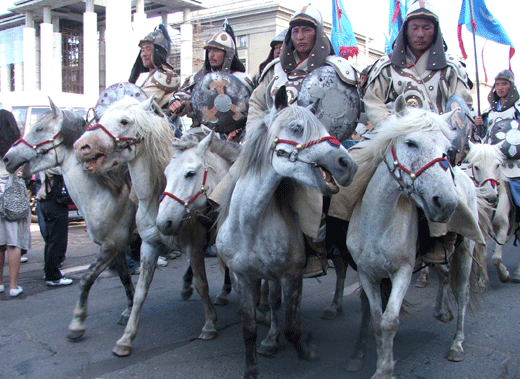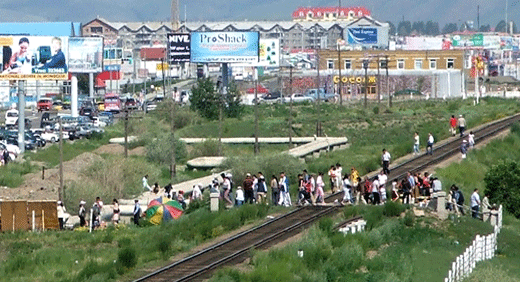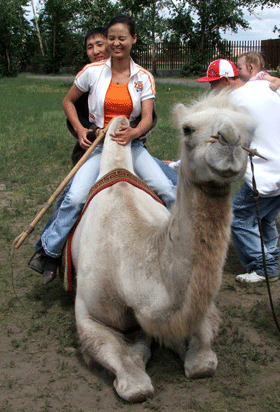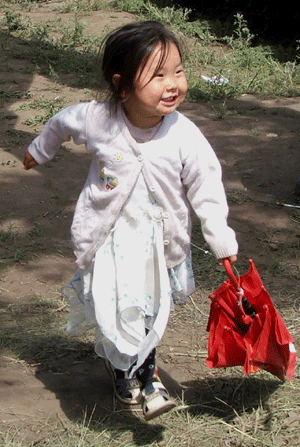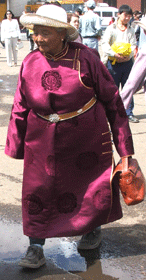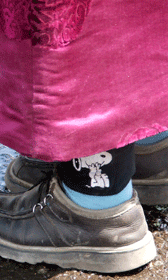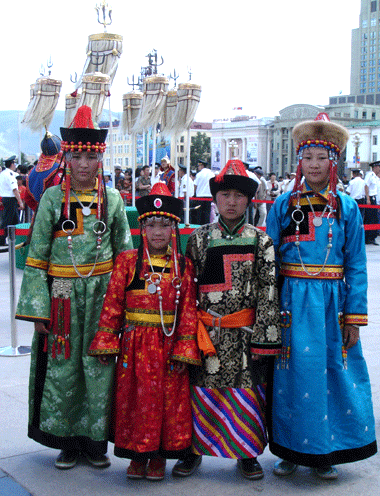
Tales of a 21st Century Gypsy
July 13, 2006. Naadam
While I spent four days in the country, Ulaan Baatar filled up with tourists. This week, my last in Mongolia, it’s Naadam, the national holiday and sports festival. It’s also the 800th anniversary of Chinggis Khan uniting the nation, and the Ministry of Tourism has been pushing it as the time to visit Mongolia and the time to be in Ulaan Baatar. I don’t know if they met their own expectations, but the city certainly seemed to be full of foreigners. Mostly Europeans, though I saw an Elderhostel assembled in Sukhbaatar Square, and plenty of fresh-scrubbed Koreans and brazen Aussies. Mongolia is closer for Europeans and Australians than for us. Besides, traveling in Asia is what cool Europeans do, I think. I don’t know where cool Americans go – backpack around South America? These tourists aren’t friendly, it seems to me. Maybe there are too many of them. Maybe they are in crowded hotels with a million other tourists, and smiling at unknown white folks means accepting that they are tourists – not “travelers”. I’ve never quite understood that distinction between tourists and travelers, but for lots of people being a tourist is somehow an insult, whereas to be a traveler is a badge of honor. I think maybe travelers spend less money and more time, and fancy that somehow they are experiencing the country as the locals do. Perhaps.
I only saw a little of Naadam. Tuesday morning I made it to the square – that’s Sukhbaatar Square, there only is one referred to as The Square – in time to catch the cavalry parade that begins the Naadam opening event. It wasn’t much of a parade – a few hundred men on horses heading one way at nine o’clock and coming back the other way half and hour later. But the horses
